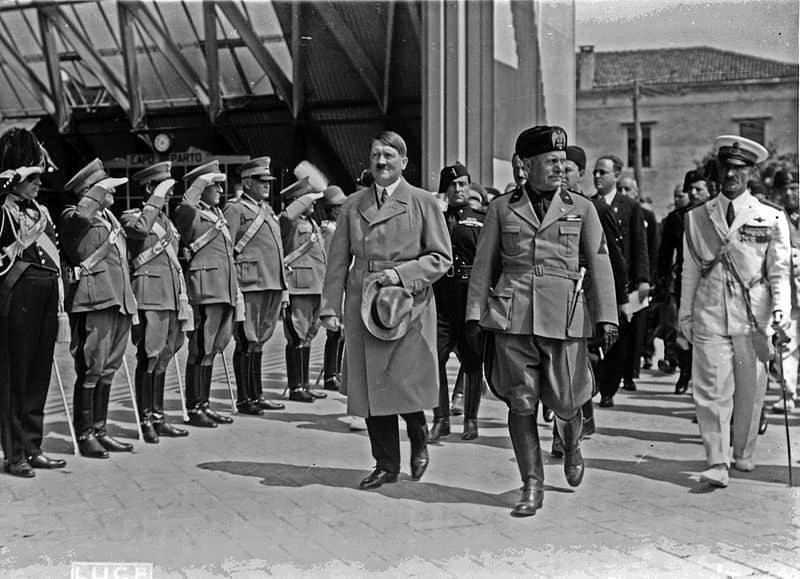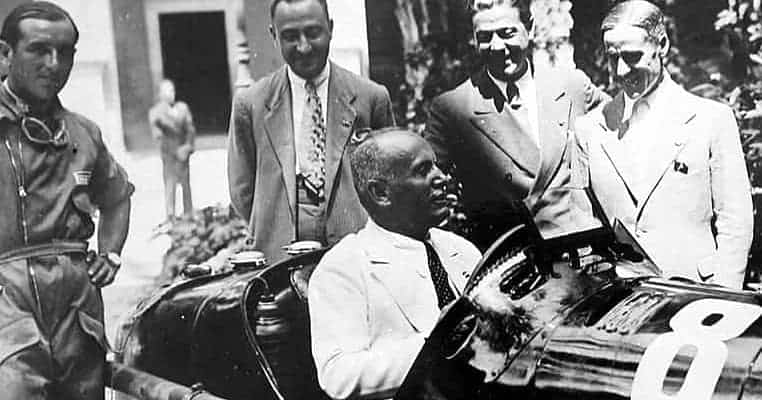Although Italy is often regarded as the weak sister of the nations which made up the Axis during the Second World War, the Italian Fascist regime preceded the rise of the Nazis in Germany by many years. Hitler admired Mussolini and adapted many of the Italian leader’s methods and plans during his rise to power. Like most of the industrial world, the economic collapse of the 1930s greatly affected the Italian economy, with the resulting unemployment and financial uncertainty. Mussolini’s government established programs and institutions to help the economy recover, and over time the Fascist government gradually gained ownership of the majority of the nation’s industrial capacity, which though it lagged behind the rest of Europe’s powers nonetheless grew considerably. The state also reached into most aspects of daily life with programs for adults and children.

Mussolini’s Italy had its own secret police, which were less fearsome than the Nazi SS and Gestapo but which were nonetheless avoided as much as possible by the Italian populace. The depth of which Fascism was imposed on the Italian people was clearly stated by the party in 1935 in the Doctrine of Fascism. The Doctrine stated, “The Fascist conception of the State is all-embracing; outside of it no human or spiritual values can exist, much less have value. Fascism…interprets, develops, and potentiates the whole life of a people.” Despite being moderated somewhat by the influence of the Roman Catholic Church – Mussolini created and maintained diplomatic relations with the Vatican through most of his rule – the Italian citizenry felt the effects of Fascist rule in nearly all aspects of their life.
Here are some examples of life in Fascist Italy during Mussolini’s years in power both before and during the Second World War.

1. Mussolini actively solicited the support of the Roman Catholic Church
Benito Mussolini was an atheist, as well as staunchly anti-clerical, as were the majority of the leaders of the Fascist Party. When they achieved power in 1922 their political position in the Italian parliament was tenuous, and to strengthen it Mussolini created a political alliance with the Italian People’s Party, a Catholic organization. The ties led to a better relationship with the Vatican, which had not been an independent city-state since Italy had annexed the Papal States in the 19th century. In 1929 relations between the Italian Fascist government and the Vatican were cemented in the Lateran Accord, which created the independent Vatican City, with the Pope as its head of state, within the boundaries of Rome. Roman Catholicism was established as the state religion of Italy, though other religions, including Judaism, were allowed.
In March of 1929, a plebiscite vote was scheduled to allow the Italian citizenry to express their views over the new relationship between the Church and the Italian government. Over 9 million Italians voted and of them less than 150,000 expressed disapproval. Though the number seems low, the 9 million participants represented more than 90% of the registered voters in Italy. The Church became a strong supporter of several of Mussolini’s later expressed policies, such as fighting the communists in the Spanish Civil War, and eventually the invasion of Ethiopia. The official support of the Church over many policies was placed before the largely Catholic Italian population, and the support of the lay members of the Church followed. The Roman Catholic Church and the Fascists were never warm and cozy, and areas of contention remained, but they continued to work together throughout the regime of Mussolini.

